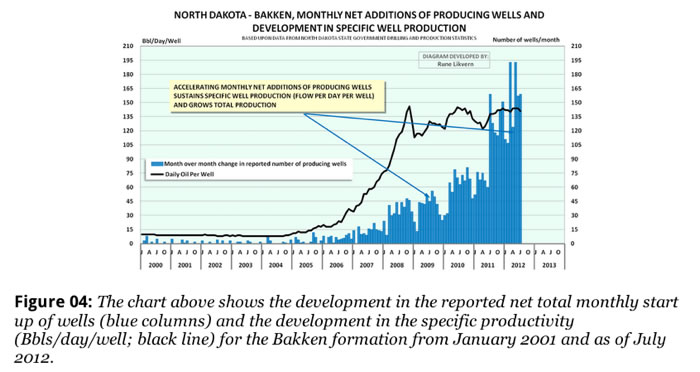North American Oil
There has been a revolution is oil production in the US. With techniques now developed to extract oil from shale, America has had a resurgence in oil production.This resurgence has sparked optimism. Over the next few years we will get a better idea of the volumes producible. This suggests that gasoline will be available for some time to come. But our modern understanding is that we need to get off oil use anyway. In any case we will look at Quantities, Cost, Air Pollution, Cancer and Lung disease risks.
The Shale Oil Revolution 
In the US we have learned how to get oil that is trapped in shale rock out of the ground. The largest region being developed is in North Dakota, called the Bakken -see below, but many other areas in the US can be exploited.
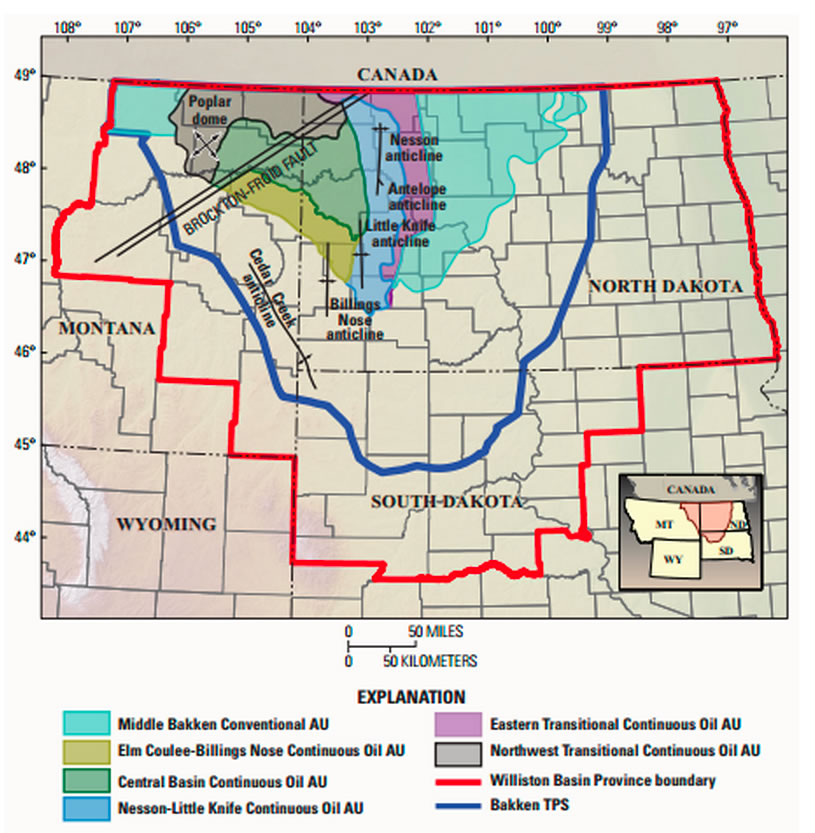
A picture of 14 oil shale drilling sites in North Dakota is shown below.
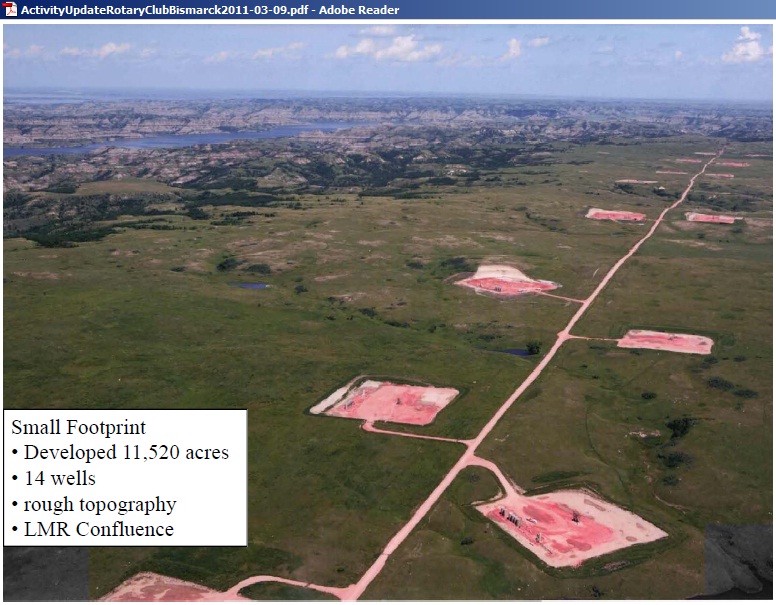
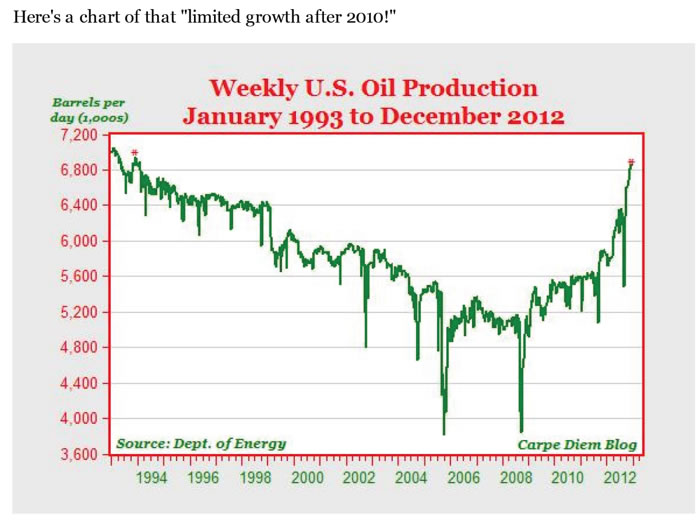
The new finds, which have increased our oil output the most since 1992 (see plot on left), have been the basis of optimism that we will soon be energy independent using our own oil.
However, our EIA (Energy Information Administration) has a forecast (see right) showing that we will achieve 7 million barrels per day, up from the 6.2 in 2012. Then output will start decreasing to a plateau of about 6-6.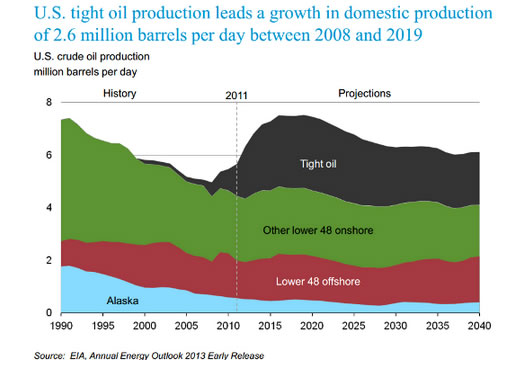 2 for decades.
2 for decades.
The red line drawn through the estimates intersects the price per barrel the US is paying today (prices are on the right axis), and are plotted as the black line. Thus, the price estimate of the government is that the large new finds will only hold prices to what they are today to about 2016 (3 years) then they will start to rise, and by 2040 will be $140/barrel. Note our official government thinking is that OIL PRICES WILL NOT FALL DUE TO OUR NEW FINDS.
In part, the reason for this is that it takes many more wells to keep the same level of output in the Bakken shale (see plot to left). Blue is the number of wells. Note that the output (black line) has been fairly constant as the number of wells needed to achieve this has increased 5 times. This, of course, increases the price of getting that oil, and doesn't bode well for how long the supply is going to last.
The Tar Sand Phenomena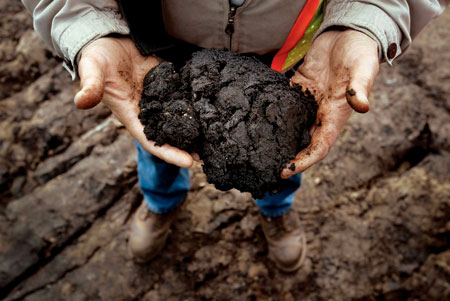
This hand full of tar sands needs to be cooked to become crude oil.
Canada uses 1/3 of the natural gas it produces to do this cooking. The cooking (initial refining) produces a high level of pollution (see picture below).
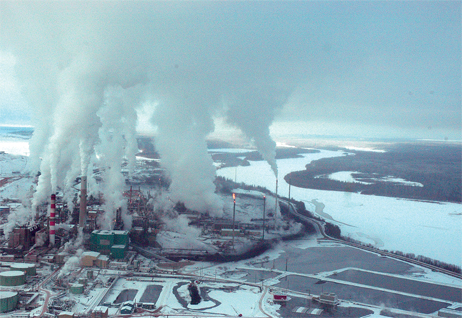 As we become more and more dependent on tar sands oil, both the worlds atmosphere and Canada's ecology are being destroyed. Huge amounts of CO2 are being emitted into the atmosphere.
As we become more and more dependent on tar sands oil, both the worlds atmosphere and Canada's ecology are being destroyed. Huge amounts of CO2 are being emitted into the atmosphere.
The images below, show two exploited areas.

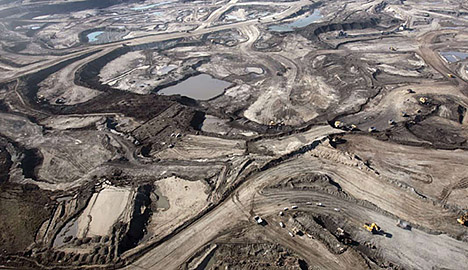
In the picture to the left one can see that lakes are also being contaminated.
The US currently imports about 1/3 of the oil it uses from Canada. Canada has displaced Saudi Arabia and Mexico as our leading importers.
Proposed Pipelines
The proposed pipelines (see below) will guarantee an increasing and long term US dependence on tar sands oil, which will only make these matters worse.
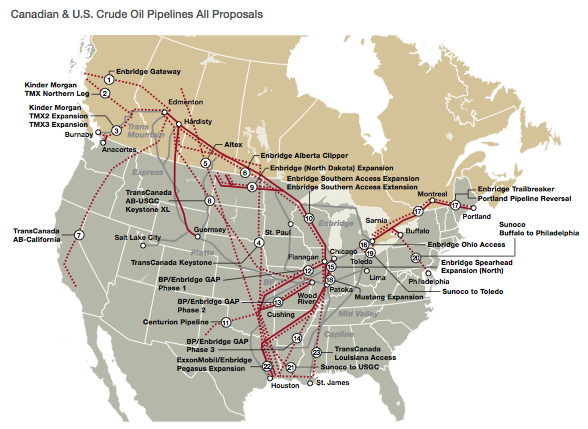
Majority of Our Oil Supply
Even with all the above new sources, the combined output of the two processes will only amount to the blue wedge in the graph below, which is 12% of the world's needs by 2035.
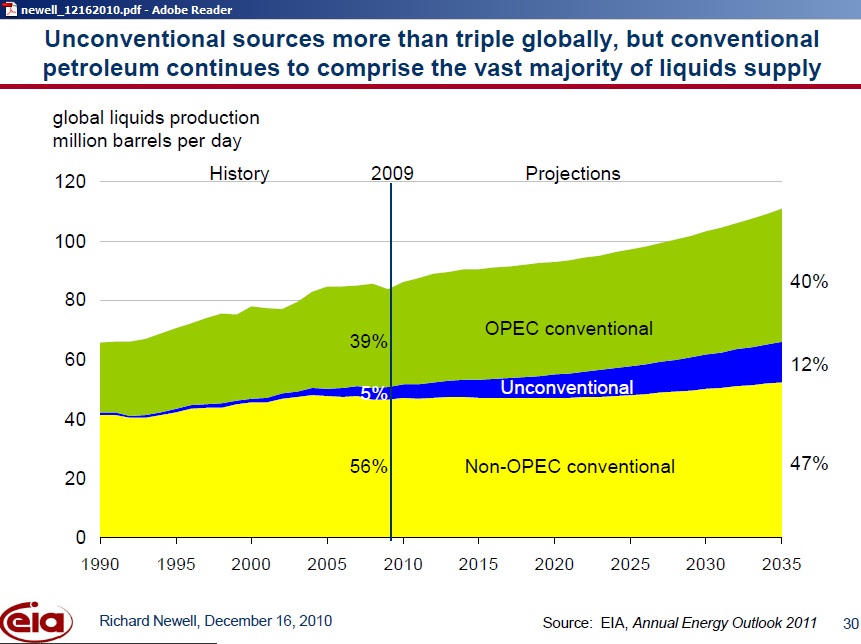
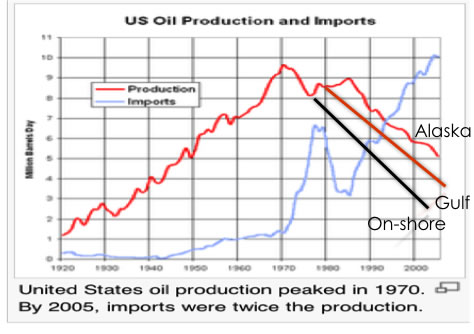
This will be completely inadequate to meet our needs. The plot above shows that at our height we were extracting 9.5 million barrels a day (1971), and that our decrease to 5 million (without the shale oil just discussed) is the state of our conventional oil wells. Thus, the shale, has to compensate for this loss, and add even more to enable the increase projected by the EIA.
An estimate of the impact of opening up the ANWAR reserve to oil drilling is shown below. This will have an effect for a few years from 2015-2040 (but is far from a long term solution). And, it will only contribute a small amount to our needs over this period. Based on the Canadian oil supply, it will do essentially nothing to reduce oil prices.
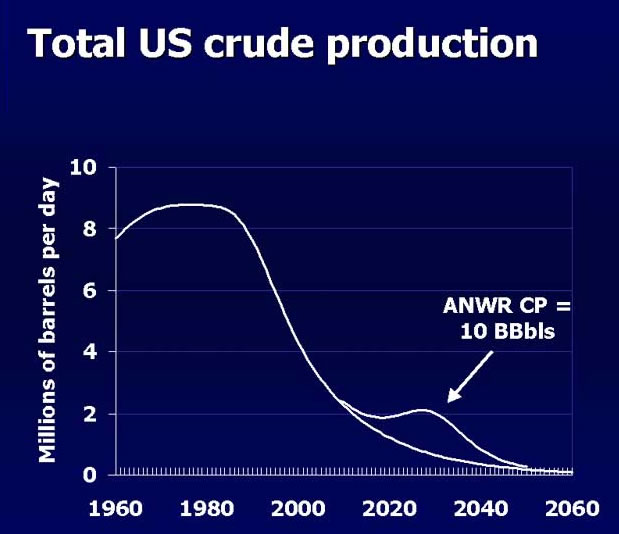

The table to the left indicates that Goldman Sacks estimate of the number of vehicles in the world will be 4 times as many by 2050. They further estimate that there will only be 2 times as much oil. Thus, adding 40% to our oil supply, in the face of a 4 times increase in need is obviously not going to do the job. It will be woefully inadequate.
As we argue on this site, we need to move away from oil to a mixture of natural gas produced methanol/ethanol and renewable methanol/ethanol from bio-gas. This methanol/ethanol fuel can run Internal Combustion engines more efficiently, so we don't need as much, methanol runs the engine better and much cleaner, and in the future methanol can run fuel cells which are much more efficient again than current internal combustion engines. Although today it may not seem necessary, it is clear that it will be in the future, so we should get started building the infrastructure and honing the technology. And, of course the faster we do this the more chance we have of slowing the greenhouse gases building up.


